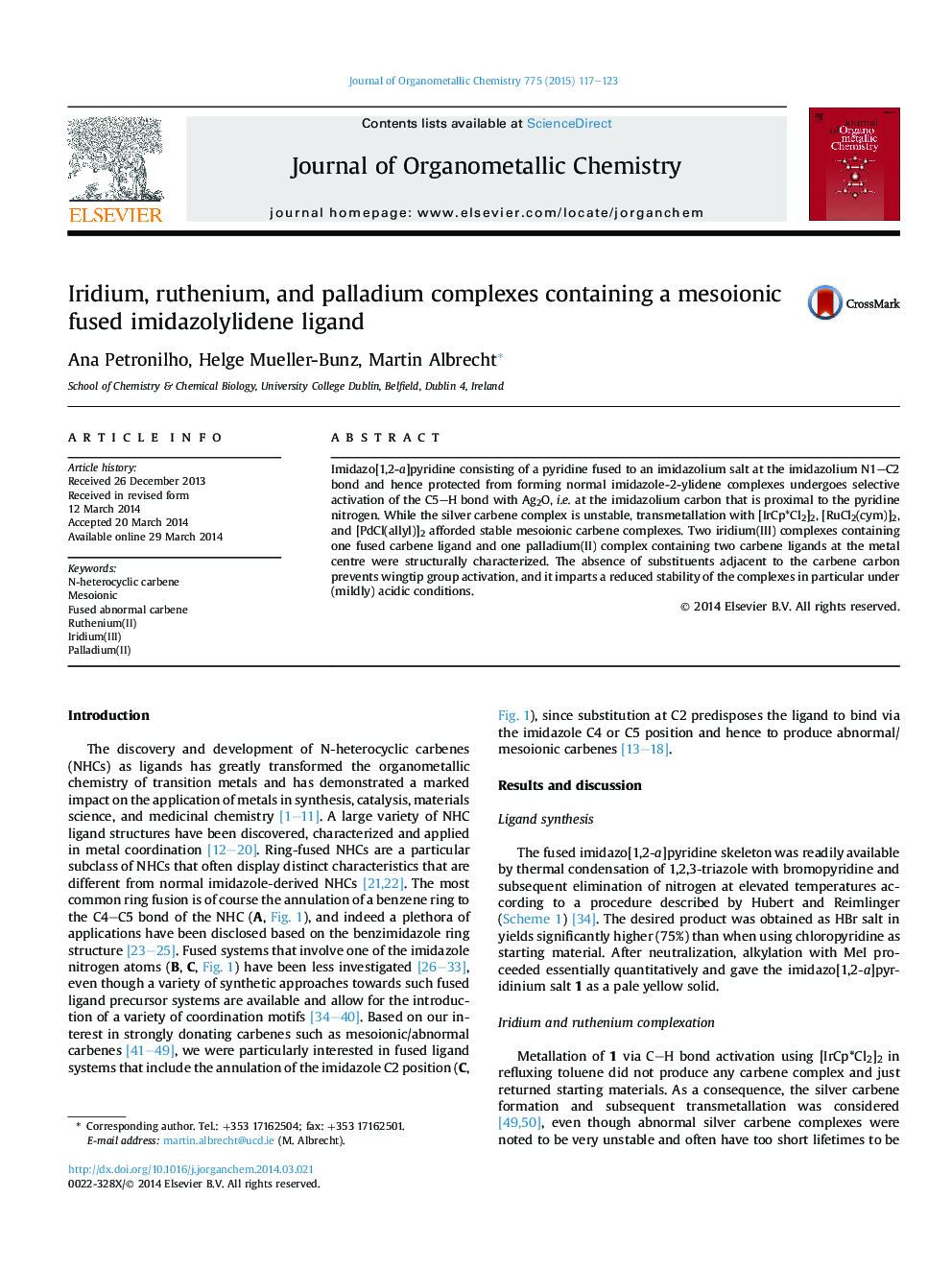| Article ID | Journal | Published Year | Pages | File Type |
|---|---|---|---|---|
| 1322201 | Journal of Organometallic Chemistry | 2015 | 7 Pages |
•A fused mesoionic pyrido-imidazolylidene was metallated with Ir, Ru, Pd.•Metallation occurs selectively at the carbon proximal to the pyridine.•Little steric protection of the mesoionic carbenes destabilizes the M–C bond.
Imidazo[1,2-a]pyridine consisting of a pyridine fused to an imidazolium salt at the imidazolium N1–C2 bond and hence protected from forming normal imidazole-2-ylidene complexes undergoes selective activation of the C5–H bond with Ag2O, i.e. at the imidazolium carbon that is proximal to the pyridine nitrogen. While the silver carbene complex is unstable, transmetallation with [IrCp*Cl2]2, [RuCl2(cym)]2, and [PdCl(allyl)]2 afforded stable mesoionic carbene complexes. Two iridium(III) complexes containing one fused carbene ligand and one palladium(II) complex containing two carbene ligands at the metal centre were structurally characterized. The absence of substituents adjacent to the carbene carbon prevents wingtip group activation, and it imparts a reduced stability of the complexes in particular under (mildly) acidic conditions.
Graphical abstractImidazo[1,2-a]pyridine undergoes selective C–H bond activation to afford mesoionic carbene complexes with [IrCp*Cl2], [RuCl2(cym)], and [PdCl2]; the N-substituents of these new carbenes are unusually remote from the metal coordination sphere.Figure optionsDownload full-size imageDownload as PowerPoint slide
